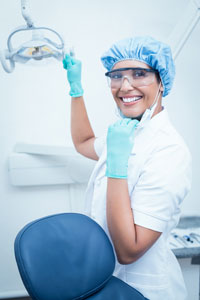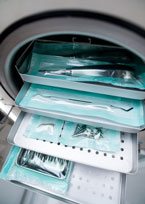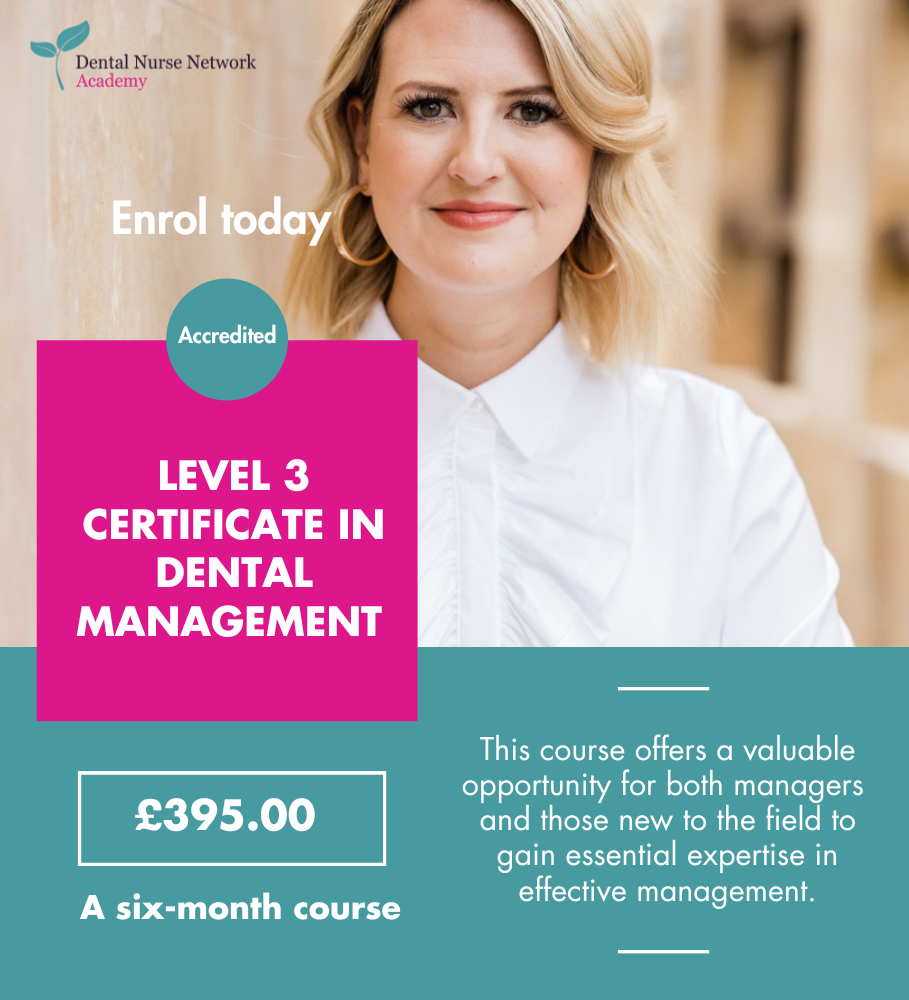 Before defining infection control, it is important to determine what cross-infection is. Cross-infection is the transmission of pathogenic bacteria from one individual to another. The process of reducing this transmission risk is known as infection control. Interested in IPC Lead training? Click here to see our IPC lead course.
Before defining infection control, it is important to determine what cross-infection is. Cross-infection is the transmission of pathogenic bacteria from one individual to another. The process of reducing this transmission risk is known as infection control. Interested in IPC Lead training? Click here to see our IPC lead course.
Sources of infection
The three sources of infection are individuals who are:
- suffering from a disease;
- recovering from a disease;
- healthy carriers of a disease.
Three ways that infection can spread are:
- through direct or indirect transmission;
- through the blood stream (parenteral);
- through the air (airborne).
The chain of infection
The process by which cross-infection occurs involves:
- an adequate number of pathogens;
- a source;
- a mode of transmission, e.g. aerosol;
- a method of entry, e.g. nasal passages;
- a susceptible host.
In order to prevent the spread of infection, all patients should be treated with universal precautions. This involves the understanding that every patient may be carrying an infectious disease.
The Department of Health issued the Health Technical Memorandum 0105 (HTM 0105), which aims to reduce cross-infection risks to a minimum. The latest edition/update of this was published in 2013. As well as adhering to HTM 0105 requirements, all dental practices should have a local infection control policy which is accessible to all clinical staff and is regularly updated. HTM 0105 outlines two categories of requirements for dental practices to meet in terms of infection control: ‘essential’ and ‘best’. All dental practices should be capable of meeting and maintaining essential requirements and should have plans in place to meet best requirements if this has not already been achieved.
The constituents of infection control in dental practice
These are:
1. Patient protection
2. Hand hygiene
3. Personal protective equipment (PPE)
4. Instrument cleaning
5. Disinfection
6. Sterilisation
7. Packaging and storage
8. Waste disposal
9. Laboratory asepsis
10. Spillage management
11. Sharps management
12. Dental units and water lines (DUWLS)
13. Surgery design and zoning
1. Patient protection
Although all patients should be treated as potentially infectious and subject to universal precautions, the clinician should check and update the patient's medical history at each visit. Each patient should be provided with clean personal protective equipment (PPE) such as eye protection and a bib. Further infection control protection may be gained by use of a rubber dam where appropriate, by ensuring a clean and well-ventilated surgery, and by using high volume suction to reduce the bacterial load in any generated aerosol.
2. Hand hygiene
Hand contact is one of the main routes of cross-infection, so a sufficient hand hygiene protocol should be in place. Hand hygiene procedures should be applied before and after treatment sessions, PPE usage, and decontamination processes. They should also be applied prior to coming into contact with sterilised instruments. Hand hygiene includes hand washing and the use of disinfectant gels. A suitable hand washing protocol includes:
Under running water and after applying a detergent:
- Rub palm to palm
- Rub backs of both hands
- Rub palm to palm with interlocked fingers
- Rub the backs of fingers whilst interlocked
- Cup each thumb with the opposing hand and rotate
- Rub fingertips into open palms
- Dry hands thoroughly using disposable paper towels
3. Personal protective equipment (PPE)
As with patient PPE, the aim is to protect the individual from pathogens either entering or exiting the body. PPE for the dental care professional consists of uniform, disposable gloves, eye protection, plastic disposable aprons, face masks and appropriate footwear. PPE should be single use when possible and otherwise should be disinfected or laundered according to the manufacturer's instructions. PPE should not be worn outside of the dental premises and clinicians should not wear disposable PPE outside of the clinical area.
 4. Cleaning instruments
4. Cleaning instruments
Instrument cleaning is the process of removing all visible debris from the instrument surface. This may take place through manual cleaning, an ultrasonic bath or a washer-disinfector. The use of a washer-disinfector helps to fulfil best practice requirements.
During the process of cleaning, basic PPE must be worn. Household gloves must also be worn when handling instruments. Instruments should be cleaned as soon as possible after use, as this makes the process easier. However, in certain cases, instruments may be immersed in water or have a suitable disinfectant gel or foam applied prior to sterilisation in the near future.
MANUAL CLEANING
Manual cleaning should take place using a long handled brush with instruments immersed in warm water (no more than 45°C), using a suitable detergent. After cleaning, instruments should be rinsed to remove any trace of detergent.
ULTRA-SONIC BATH
Prior to ultra-sonic cleaning, instruments should be immersed in cold water with detergent. Instruments should be taken apart and hinges opened where possible. Ultra-sonic baths should have the water and detergent changed when visibly contaminated or at the end of every clinical session. The manufacturer's instructions should be adhered to in terms of time, detergent and general care.
Prior to sterilisation, any instruments that have not been processed via a washer-disinfector should be rinsed to remove any trace of detergent and dried with a lint-free cloth. Instruments processed through a washer disinfector receive a rinsing and drying stage as part of the cycle.
WASHER-DISINFECTORS
Washer-disinfectors not only clean instruments but also include a disinfection cycle which allows for the safe handling and inspection of instruments prior to sterilisation. This is the preferred method of instrument cleaning. There are five generic stages during the process of a washer-disinfector. These are: flush, wash, rinse, disinfect and dry. As with ultra-sonic baths, the manufacturer's instructions should be followed and an appropriate detergent/salt should be used.
- 'Flush – removes “difficult” gross contamination, including blood, tissue debris, bone fragments and other fluid and solid debris. Latest standards indicate that a water temperature of less than 45°C is used to prevent protein coagulation and fixing of soil to the instrument.
- Wash – removes any remaining soil. Mechanical and chemical processes loosen and break up contamination adhering to the instrument surface. Detergents used in this process must be specified by the manufacturer as suitable for use in a washer-disinfector and compatible with the quality of water used. Detergents should also be compatible with the instruments being processed to avoid instrument degradation including discoloration, staining, corrosion and pitting.
- Rinse – removes detergent used during the cleaning process. This stage can contain several sub-stages. The quality of water to be used for this stage is an important consideration in terms of ensuring a clean unmarked product after sterilization. Advice should be taken from manufacturers with respect to the compatibility of the hardness or quality of the water supply with the equipment and detergents used.
- Thermal disinfection – the temperature of the load is raised and held at the pre-set disinfection temperature for the required disinfection holding time: for example, 80°C for 10 minutes; or 90°C for 1 minute.
- Drying – Purges the load and chamber with heated air to remove residual moisture.'
Sourced from HTM 0105
ALL instruments, however cleaned, should be inspected for any visible debris. This can take place using a lit-magnification tool to aid visibility. Should an instrument fail this inspection stage, it should be re-processed until visibly clean when inspected.
5. Disinfection
Disinfection is the process of reducing the number of pathogens to a harmless level. Disinfection should be used when items or equipment can neither be disposed of nor sterilised. An example of disinfection is asepsis of laboratory work. Disinfection also occurs during the process of washer-disinfectors.
6. Sterilisation
Sterilisation using steam under pressure is considered the best option for use in the dental environment. This is achieved using an autoclave. Types of autoclaves available are 'N', 'B' and 'S' types. Type 'N' refers to a sterilisation process where instruments are not wrapped prior to autoclaving. Steam pours down on instruments in an 'N' type autoclave, whereas in 'B' or 'S' types, a vacuum approach means that instruments may be pouched prior to sterilisation. 'B' type autoclaves are the more common and 'S' types are designed to process specific loads. For each autoclave type available, a temperature of 134-137 °C should be achieved for a minimum time of three minutes at a pressure of 2 bar.
7. Packaging and storage
Items that are packaged after sterilisation (N type) and items packaged prior to sterilisation (B and S types) can remain sealed in packaging for a period of 12 months. It is also acceptable for unpackaged, sterilised instruments to remain in a covered container for one week; if still unused after this time period they must be reprocessed. Safe transport from and to the decontamination area is important to avoid potential sharps injuries and incidents. Two lockable boxes, clearly labelled as 'dirty' and 'clean' respectively, are recommended to fulfil this criteria.
VALIDATION AND CERTIFICATION
All aspects of the automated decontamination process should be validated. This ensures that equipment is operating at a high level of performance and carrying out the specified task. Any decontamination equipment used should be certificated, and tested on a daily basis. Audits of these tests should be kept for two years. Records of validation can include safety checks, cleaning/sterilisation efficacy, time steam and temperature testing, steam penetration tests, load dryness and automatic control tests. However, these checks are specific to each type of equipment and testing should be carried out according to the manufacturer's instructions and at recommended time periods. All paperwork relating to certification, validation and auditing should be kept in the decontamination folder and it is the responsibility of the infection control lead to ensure processes and testing are being carried out effectively.
8. Waste disposal
Hazardous waste or clinical waste is any item that poses a risk to health. This risk extends to the environment outside of the dental practice. For health and safety purposes, appropriate waste segregation and disposal procedures should be followed.
- Any blood- or saliva-contaminated waste which does not contain amalgam or chemical materials are disposed of in orange clinical waste bags.
- Sharp items and teeth free of amalgam are disposed of in a rigid sharps box.
- Out-of-date medicines and medicinal substances are disposed of in a separate rigid container.
- Any items contaminated with amalgam are segregated to the amalgam waste, and plaster models are disposed of in gypsum waste.
- Offensive waste includes waste that has not been contaminated with blood but may have been contaminated with saliva, even where no known risk is present. There is some confusion over this, however, as all patients should be treated with universal precautions.
- For those practices still using wet film X-ray processing, there should be disposal options available for films, lead foil, developer and fixer.
- As with all dental waste, contracts with appropriate waste disposal companies should be in place. Waste should be stored in a suitable area and should not be accessible to un-authorised personnel.
9. Laboratory asepsis
This includes the disinfection of dental impressions, dentures, orthodontic appliances, bite raisers and any other prostheses. Prostheses are disinfected using an appropriate disinfectant for the recommended time period according to the manufacturer's guidelines. This disinfection process should occur before and after any prostheses are placed into or removed from a patient's mouth. Disinfected prostheses should be stamped and dated so that external or internal laboratories are aware of asepsis.
10. Spillage management
This term includes management of amalgam/mercury spillages and other clinical spillages such as vomit or urine. Spillage kits are readily available from waste companies. Details of the management process should be readily accessible from the infection control file and the infection control lead will be able to carry out necessary training.
11. Sharps management
Having a detailed and accessible sharps management procedure readily available can be vital after receiving a sharps injury, as it can be a stressful and anxious time. A suitable procedure includes:
- Stopping the activity;
- Removing the glove;
- Encouraging the wound to bleed under running water;
- Drying the wound and applying a waterproof dressing;
- Assessing the risk of contamination;
- If there is contamination, reporting to occupational health for possible further action;
- Whether or not there is contamination, reporting the injury in the accident book.
12. Dental units and water lines (DUWLS)
DUWLS should be flushed/purged for at least two minutes at the start and end of the day, and the start and end of any time period where they have not been in use for an extended time (such as lunch breaks). In between patients, lines should be flushed for 20 seconds. According to the 2013 update of HTM 01:05, water bottles should be removed at the end of the treatment day, rinsed with distilled or reverse osmosis water, and stored invertly. (This does not apply when using an alpron system). Microbiological testing using dip slides is not considered essential, but is recommended. A trained person should carry out these tests periodically and according to manufacturer's instructions. It is also recommended that dental practices register with an appropriate body such as the Legionella Control Association.
13. Surgery design and zoning
A dirty-to-clean workflow is essential in reducing the risk of cross-infection. The ideal is to have separate rooms for dirty and clean segregation. Zones should be clearly labelled and instrument decontamination should take place as far away from the dental chair as possible. If the decontamination process must take place in the treatment room then it should only be carried out when there is no patient present, as aerosol generated will be lessened. A clean-to-dirty airflow is required when designing a surgery or fulfilling infection control guidelines.
CLEANING PROTOCOLS
According to the Health and Social Care Act 2008, dental practices should have suitable cleaning protocols in place. Due to the high risk of infection in clinical areas, equipment used to clean these should be segregated from other equipment and the cleaning process should also be isolated. Colour coding assists in control infection. The following codes should be used:
- Red: bathrooms
- Green: kitchen area
- Blue: non-clinical areas such as reception/waiting room
- Yellow: clinical areas
Essential and best practice
As previously mentioned, all dental practices should be meeting essential requirements and have plans in place to be achieving best practice. The changes required to achieve best practice include:
- a separate area for decontamination processes;
- a washer-disinfector;
- separate and centralised storage of equipment.
Infection control lead
Each dental practice should have a nominated infection control lead. This role includes ensuring all clinical staff are following the infection control policy, ensuring that staff members receive regular training, and ensuring that all processes and policies are up to date. The infection control lead does not have to be a dentist and there are many courses available for dental nurses to attend.
Continuing professional development (CPD)
Infection control is part of core CPD, and registrants should receive no less than five hours of training in this area in their CPD cycle. This is the responsibility of the registered professional, although many practices provide training.
General Dental Council (GDC) requirements
Infection control is mentioned in the Standards for the Dental Team as laid out by the GDC. Under the first principle, 'Putting patients’ interests first', patients must be treated in a safe and hygienic environment. Clinical staff must find out about the laws and regulations specific to their own clinical practice.
Further information on infection control is available from your infection control lead in your dental environment. Guidelines and standards on patient care and continuing professional development can be sought from the GDC. The HTM 01:05 update document should also be available in paper or electronic form in your place of work.


